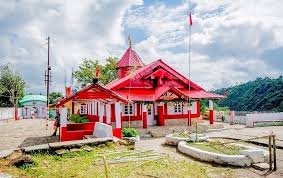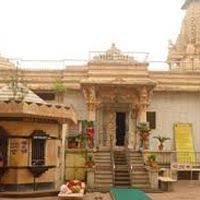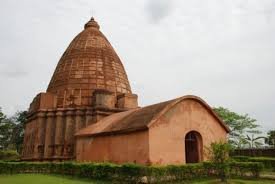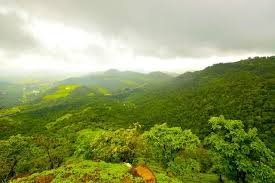Introduction
Nestled in the lush green hills of Meghalaya, the Nartiang Durga Temple stands as a testament to faith, tradition, and history. Located in the Jaintia Hills district, this revered temple is dedicated to Goddess Durga and holds immense religious and cultural significance. Known for its ancient architecture, divine aura. And deep-rooted traditions, the Nartiang Durga Temple is considered one of the 51 Shakti Peethas. And making it a major pilgrimage site for devotees from across India.
With its serene surroundings and centuries-old rituals, the temple continues to attract visitors who seek spiritual solace and divine blessings. But what makes this temple so special? Let’s explore its history, legends, and significance.
A Glimpse into History
The Nartiang Durga Temple dates back nearly 500 years, built under the patronage of the Jaintia kings. The Jaintia Kingdom, which ruled parts of Meghalaya and Assam, had a deep connection with Hindu traditions and played a crucial role in spreading Shaivism and Shaktism in the region.
King Dhan Manik, one of the rulers of the Jaintia dynasty. The temple showcases a blend of Hindu and indigenous Khasi-Jaintia architecture, reflecting the region’s diverse cultural influences.
Unlike traditional Hindu temples, Nartiang Durga Temple incorporates local Khasi religious elements, making it unique in its structure and rituals.
The Legend of Nartiang Durga Temple
Like many sacred sites in India, the Nartiang Durga Temple is steeped in mythology. According to Hindu scriptures, it is considered a Shakti Peetha—a site where parts of Goddess Sati’s body fell after Lord Shiva’s cosmic dance of destruction (Tandava).
Connection to the Shakti Peethas
It is believed that Sati’s left thigh fell at this site, making it one of the significant Shakti Peethas in the country. Devotees believe that the divine energy of Goddess Durga is ever-present here, and prayers offered at the temple bring blessings and protection.
Another local legend suggests that the temple was built at the site where Goddess Durga vanquished a powerful demon, symbolizing the victory of good over evil. This story continues to be retold during the grand Durga Puja celebrations held at the temple.
Architectural Marvel of the Temple
The Nartiang Durga Temple’s architecture is a beautiful blend of Hindu and Khasi-Jaintia styles. Unlike the towering spires of North Indian temples, this temple has a distinct sloping roof, designed to withstand Meghalaya’s heavy monsoons.
The sanctum houses a powerful idol of Goddess Durga, adorned with flowers, vermillion, and offerings from devotees. The temple complex also features traditional Khasi monoliths, which are stone structures symbolizing ancestral spirits, adding a mystical aura to the site.
The Grand Durga Puja Celebrations
Durga Puja at Nartiang Durga Temple is a spectacular event that attracts thousands of devotees. The five-day festival is marked by elaborate rituals, prayers, and celebrations, turning the temple into a vibrant spiritual hub.
Key Highlights of the Puja
- Maha Saptami (First Day) – The festival begins with the ceremonial invocation of the Goddess, accompanied by traditional Khasi and Bengali hymns.
- Maha Ashtami – The most powerful day of Durga Puja, where Kumari Puja (worship of a young girl symbolizing the goddess) takes place.
- Maha Navami – Devotees gather to offer special prayers, and traditional dance performances add to the festive spirit.
- Vijaya Dashami (Final Day) – The grand immersion of the deity marks the end of the festival, symbolizing the goddess’s return to her celestial abode.
Spiritual and Cultural Significance
The Nartiang Durga Temple is not just a religious site—it is a cultural bridge between Hindu traditions and Khasi-Jaintia beliefs. The fusion of these traditions has made the temple a unique spiritual destination.
Local Khasi-Jaintia rituals are also integrated into the temple’s daily prayers, symbolizing the coexistence of Hinduism and indigenous faiths. This makes Nartiang a special place where spirituality transcends boundaries.
How to Reach Nartiang Durga Temple
If you’re planning a visit, here’s how you can reach the temple:
- By Air: The nearest airport is Shillong Airport (Umroi), about 65 km away. Guwahati’s Lokpriya Gopinath Bordoloi International Airport is a better option for those coming from other states.
- By Road: The temple is located about 65 km from Shillong, the capital of Meghalaya. A scenic drive through the hills makes the journey a delightful experience.
- By Rail: The closest railway station is Guwahati, about 130 km away. From there, taxis and buses are available to reach Nartiang.
Best Time to Visit
The temple is open throughout the year, but the best time to visit is during Durga Puja (September–October) when the celebrations are in full swing. The post-monsoon season (October to March) also offers pleasant weather and lush green surroundings.
If you prefer a quieter experience, visiting during the off-season will allow you to enjoy the temple’s peaceful ambiance.
Conclusion
The Nartiang Durga Temple is more than just a place of worship. But it is a symbol of faith, history, and cultural harmony. As one of the most important Shakti Peethas, it holds deep spiritual significance for devotees.
Its unique blend of Khasi-Jaintia traditions with Hindu rituals makes it a one-of-a-kind temple in India. Whether you are a spiritual seeker, a history enthusiast, or someone looking for peace in nature’s lap, this sacred site in Meghalaya promises an unforgettable experience.
So, if you haven’t yet visited Nartiang Durga Temple, it’s time to embark on a journey of devotion and discovery. Let the divine energy of Goddess Durga bless your path and illuminate your soul.





